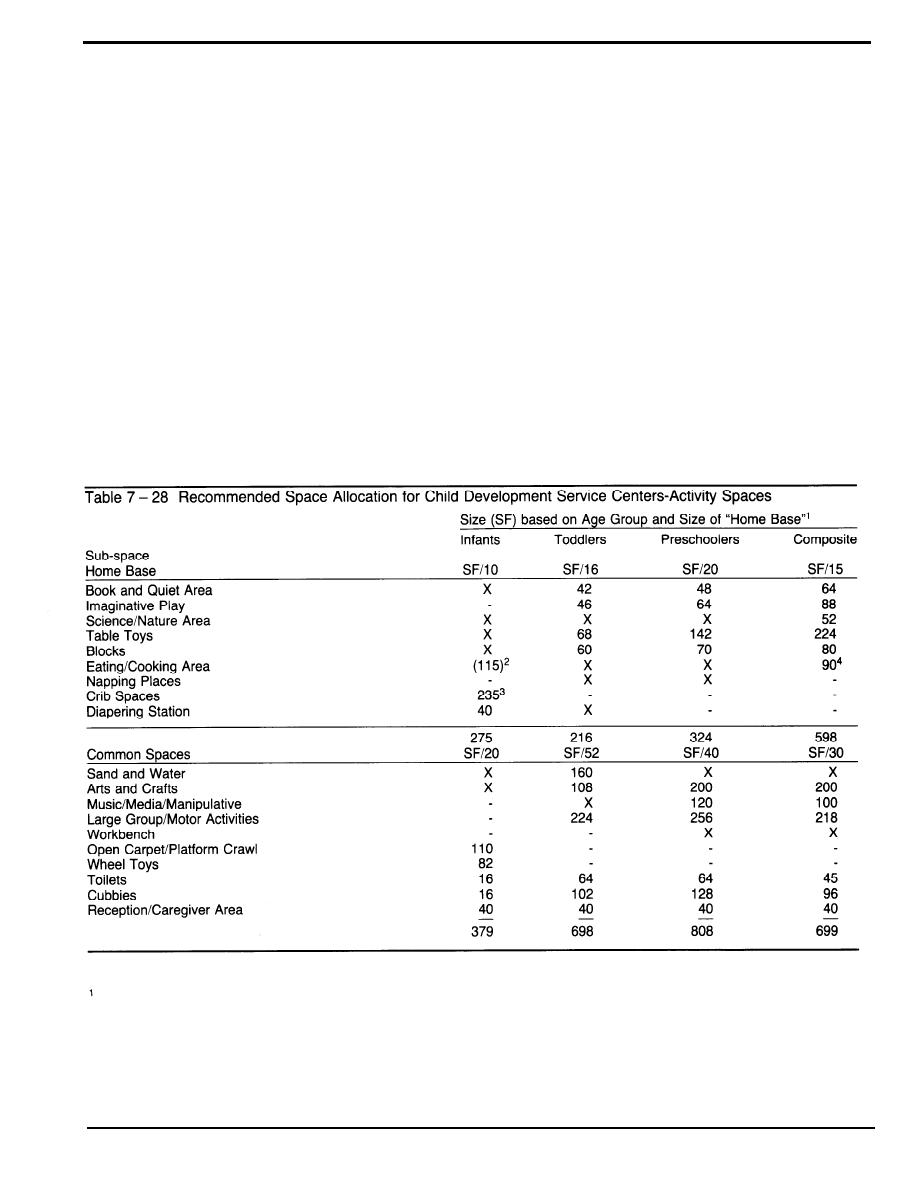
Space Criteria: A Guide to the Guides
b. Common Spaces
(b) Space Allocation. See Table 7 - 28.
(c) Relationships. Area should be adjacent to, but buf-
(1) Sand Play and Water Play
fered from, circulation routes and other noisy activities.
(a) Description. Provide an area with waterproof wall
(3) Music/Media/Manipulative
and floor materials for tactile experience with sand and
(a) Description. This area should be a place for unself-
water.
conscious musical expression (either individually or in
(b) Space Allocation. See Table 7 - 28.
small groups), viewing of audio visual materials, and
(c) Relationships. Locate near to arts and crafts, sci-
playing with manipulative toys that require open floor
ence/nature area and child bathrooms.
space.
(2) Arts and Crafts
(b) Space Allocation. See Table 7 - 28.
(a) Description. Provide an open, airy space for arts
(c) Relationships. Locate adjacent to large group motor
and crafts in which both structured and unstructured
activities area in order to accommodate larger groups.
activities can take place.
X means included as part of another suitable space.
- means not included.
Figures are g iven in this summary table for infants, toddlers, preschool-age children and composite (i.e., school-age and
preschool program children combined). See DG 1110-3-143 in regard to these and special mixed age modules for hourly
care and centers for fewer than 60 children. These figures do not refer to Family Child Care Homes.
2
Serves 20 infants rather than 10 since eating for infants is a common space activity.
3
Based on the provision of one portable crib for every child served.
4
Additional space for eating is included in other suitable activity spaces.
DG 1110-3-142 Page 7-25


 Previous Page
Previous Page
